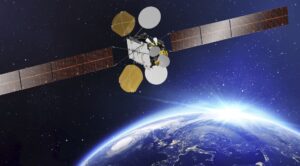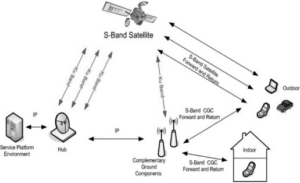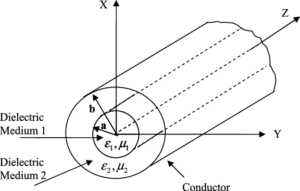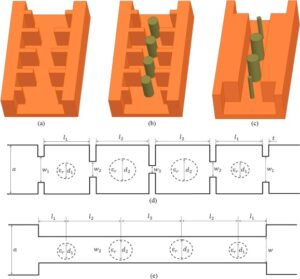Axial or front feed antennas focus signals with high gain, typically over 30 dB, ideal for long-distance communication and radar systems.
Introduction to Axial/Front Feed Antenna
Axial or front feed antennas define the scope of modern communication systems. For instance, high-gain antennas are primarily used to communicate with satellites and deep-space probes. The uniqueness of the described antenna design is based on the perfectly aligned direction of the input to the point source. In other words, axial feed antennas transfer the wave to the reflector’s axis without any loss while other systems tend to diverge. The efficiency of the axial antenna elements presupposes a parabolic reflecting shape in contrast to other types. The operation principle of a front-end feed antenna is associated with the ability to transfer electromagnetic waves directly along an axis to a paraboloid reflector. In this case, the expected result refers to the reflections in parallel to the electromagnetic waves. The suggested simplicity and coherency of a front feed antenna is the precondition for increasing its capacity and makes it the best choice for focused radiation patterns.
The nature of feed application establishes the number of advantages characterizing axial/front feed antennas. The focus of waves in parallel and near-parallel beams presupposes a higher gain estimated between 30 and 40 decibels. The gained signal can be easily and directly transferred via improved signal-to-noise performance. Similarly, axial/front feed antennas are more efficient than standard 20-25 dB dipole ranges with the minimal loss of energy. Axial/front feed antennas can transfer a weak wave thanks to the point focus controlling waves in a narrow beam. The operation of a front/axial feed antenna that starts at 5,000 feet and ends at 20,000 feet is evaluated as relatively cost-effective when achieving the expected results. The material for the antennas, such as aluminum, is determined to be relatively cost-efficient and durable. It is stated that carbon steel with outer spray-paint can protect the wave so that its effect is minimal. Furthermore, steel needs to be able to withstand adverse conditions, and health issues have to be taken into account. That is why it is better to check the sooner. Overall this type of antenna was used to send photos from Mars rover.

Design Considerations for Axial/Front Feed Antennas
Axial/front feed antennas require intensive design work, which combines a focus on performance, cost, and application. First, feed systems need to be aligned to maximize the efficiency and directivity of the antenna, thus providing the best signal quality and strength. Axial and front feed antennas are characterized by the F/D ratio, the focal length of the antenna to the diameter of the reflector .
Critical parameters and specifications
The F/D ratio of these types of antennas should be rather small, ranging from 0.3 to 0.4. In such a way, the balance of beam width and antenna gain will be achieved, which is critical for effective communication. A small ratio is, therefore, critical because it determines the performance of the antenna. PET 304 of 0.35 leads to the gain of rather small 32 dB . If this ratio increases, the gain of the antenna will increase as well. CDK 0.4 will increase the gain of the antenna to approximately 35 dB, which is beneficial. As a result, engineers often decide in favor of this or that material and component and unite the feed system properly. Such decisions are based on the need to balance the benefits of each aspect and consider their influence on performance.
Materials and components selection
Materials and components should be selected with the influence of the environment and other items on the antennas in mind. The reflector, for example, may be made of either aluminum or fiberglass. The former material is often selected due to the appropriate price and weight balance, as it is relatively lightweight and boasts a rather good conductivity. The latter material is chosen if the weight is not the problem, and the weather is rather harsh. The cost of aerospace aluminum used in WGS systems may be $200-500, and the cost of fiberglass used in Optdatcom antennas may be $300-600 . The main material should be supported by other items including circuit boards and electronics, which should be designed to present maximum performance.
Challenges in design and fabrication
Low-noise 3W amplifiers were incorporated into the Optdatcom feed system to balance the components to provide the best performance. They provide the fine SNR which is critical for the use of the satellite. They vary in gain, being used in the ranges of 30-60 dB, and the noise figure, which is rather small and equals 0.5 dB. The cost of such LNA may reach $50-200 to vary the characteristics and improve the qualities. Such LNA should be used in the feed system to balance and improve its characteristics, thus isolating the system from the surroundings and decreasing the signal loss.
Performance Characteristics
Evaluation of the performance of axial/front feed antennas mostly involves considering their radiation pattern, gain, efficiency, bandwidth, and frequency response. These factors describe how the antenna effectively transmits and receives signals, impacting its utility to various communication needs.
Radiation Patterns
The radiation pattern of an axial/front feed antenna is typically unidirectional, as the majority of the transmitted energy is directed in a single way. This is a critical feature for long-distance communication, as signal dispersion will effectively mean that much of the power transmitted will be wasted. For example, a typical antenna of this setup might have a beamwidth of 1-2 degrees, so almost all the energy used will be transmitted with a few degrees of the beam axis. In comparison, on a standard dipole antenna with a beamwidth of approximately 75-90 degrees, much of the energy will be directed at an angle, leading to lower directivity and efficiency in long-distance applications.
Gain and Efficiency
Gain on an antenna is a measure of how much of the power it receives is converted into radio waves in a specific direction. The axial/front feed antennas are known for their high gain, which can go well beyond 30-40 dB. High gain is advantageous when returning signals from deep space and reflecting them from large non-ballistic satellites and other platforms. Efficiency, in turn, refers to how well the antenna emits the power it has received, and it is relatively uniform across frequencies for an axial/front feed antenna, sitting at 70-80%. Together, this means that the performance of the axial/front feed antennas is beyond what dipole antennas offer, which sit at 2.15 dB and 50-70% efficiency.
Bandwidth and Frequency Response
Broadbanding on axial/front feed antennas is also a significant advantage, as it increases their ability to be versatile. A good broadband axial/front feed antenna should serve under -10 dB bandwidth anywhere between 500 MHz and 2 GHz, for instance, and they should also maximize the return loss and, thus, maximize pertinent frequency distances to avoid any need to adjust for differing bands.
Applications of Axial/Front Feed Antennas
Bringing the capability for oversimplified communication systems to operate at the highest levels, axial/front feed antennas are used in various disciplines due to their high gain, narrow beam width, and high efficiency. Be it the satellite communication, radar systems, or more, each application benefits from the unique capabilities of the axial/front feed antennas.
Satellite Communication Systems
Satellite communication has been a crucial technology that allowed users to transmit and receive the signals across vast distances with minimal loss. Featuring high gains usually above 30 dB, axial/front feed antennas allow utilizing this technology by offering the high gain of such transmitters. Passing thousands of miles, signals still reach the destination with sufficient strength to always maintain high quality and operability. Meanwhile, requiring to navigate satellites across the entire globe properly and at all times, these antennas must be extremely well-focused and efficient in transmitting or receiving signals to avoid any loss in the process.
Radar Systems
At the same time, for radar systems used to oversee aircraft, weather, and more, the reliable signal with negligible losses is not the only desirable quality. The radar applications must rely on the highly directional signals of the narrow beam, and axial/front feed antennas can provide beamwidths of only 1-2 degrees. With this narrow beam width, the devices can be effectively used to track and monitor targets precisely. The high efficiency of the antennas that is usually above 70% is also vital for radar systems to work optimally and conserve power for the most extended distances and highest resolution targets.
Telecommunication Infrastructure
The installation of the axial/front feed antennas is another area, where increased use and complications in daily operation of telecommunication network require their use. The construction of cellular and broadband networks that can carry high-capacity data across vast distances is an essential aspect of modern life, and axial/front feed antennas help enable that. Not only do they vary in capacities and designs, but also allow vast relational changes to support a broad range of frequencies required from 4G LTE to the latest 5G and beyond .setWidths.









